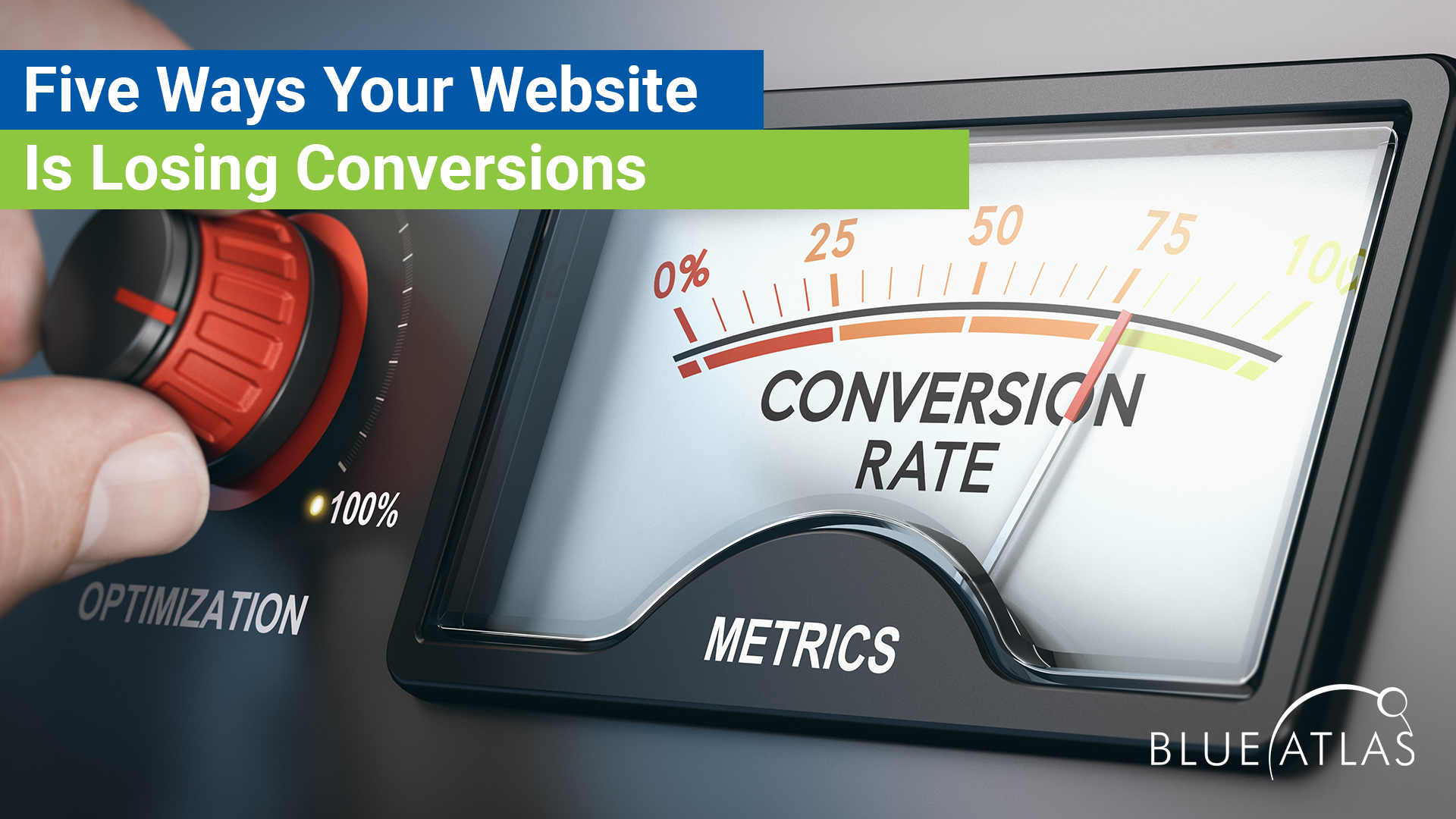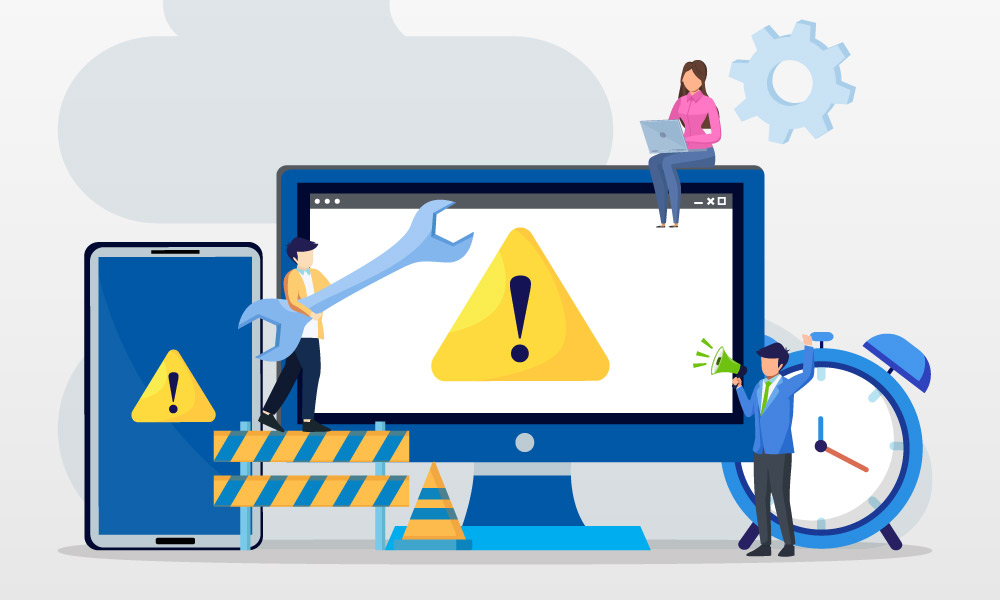5 Ways Your Website Is Losing Conversions

When drilling down to specific goals for a website, many brands focus on website conversions – a.k.a., the ratio of people that visit a website (via any channel) compared to the people who make a purchase on that website.
Website conversions tend to be low by nature and can vary based on industry. For example, Unbounce has found that average conversion rates for something like a home improvement site are around 3.3%. In other words, about three percent of people who visit home improvement landing pages make a purchase. For industries like travel or business consulting, that number is closer to 5%. This provides a way to compare your current website conversion rates with what’s expected in your industry and how well your competitors are doing.
So, what happens when a site’s conversion rates are clearly missing the mark? Several factors may be responsible for turning an unusually high number of visitors away: These are the problems we’ve found to be most impactful.
1. Landing Pages are Confusing or Disappointing
What are your visitors’ reactions when they first arrive on a landing page? Have you conducted any surveys or questionnaires to find out? We sometimes find that landing pages can have serious flaws that online users pick up on immediately, but brands haven’t noticed yet.
One common example is a website with poor architecture and navigation. If a visitor arrives on a landing page and can’t figure out where to go next or how to find the specific product/service they are looking for, they’ll leave – and sometimes what seems to be a clear desired action to a seller is very confusing for a new potential customer.
Other times, especially in more focused industries, visitors have certain expectations for what to find on a landing page. They may need certain specifications, web forms to get a fast quote, examples from a portfolio, and so on. If they find incongruous landing page messages or a lack of the content, they need to make a purchasing decision, they’ll simply leave.
2. Slow Page Loading Times Could Be Killing Your Website Conversions
When it comes to loading websites, every second can cost precious leads as people grow bored or disappointed waiting for landing page to finish loading. If every page on a website takes several seconds to load, visitors looking for a product will quickly grow weary and leave with no intention of coming back. The situation is even worse on mobile, where load times tend to be poorer without specific optimization, and people’s attention spans are even shorter.
These issues culminate in one large problem: Only a select few websites have load times that are acceptable to today’s average internet user, and visitors are rapidly growing more pick about where they shop based on loading speeds. If your brand’s website takes longer than a few seconds to load with an average internet connection, you are probably alienating customers based on load speeds alone. We see this more frequently with older websites that haven’t updated their content or coding in years.
3. There’s No Varied Content
Visitors are often turned off by a wall of text, especially when they visit a landing page to explore their options in more dynamic ways. Landing pages should always have powerful visuals and, if possible, informative videos that show how products are used. Make the value of the product immediately apparent and keep the landing page focused: Encourage visitors to select additional links to learn about specs, variants, and additional details that they may want to learn. Add graphs or infographics to explain any particularly important information, like how a product or service stacks up against opponents.
A landing page should be a lively and informative place that never overwhelms visitors. Get rid of clunky text blocks and focus on more attractive visuals instead.
4. Visitors are Overwhelmed
Conversely, other landing pages can be an overwhelming riot of content and visuals that are too annoying for visitors to deal with. We see this a lot, even with very large e-commerce sellers, on pages that have added too much over time or tried to cram in too many calls to action in one page, until it’s not clear where to go or what option to choose. That’s a sign that it’s time for a new streamlined design.
5. Your Webpage Has Too Many Pop-Ups
Few things are more annoying for online users than pop-up ads that hit right when they visit a landing page. Worst are the full-page pop-ups that utterly block content unless visitors spare the time to find out how to disable them. Ads like these can have such a negative effect that many will choose to leave the site and find one of your competitors. It’s vital to craft ads that do not annoy visitors when they are trying to access your website content!
Conclusion
The good news about poor website conversion rates is that there’s plenty your brand can do to improve them! Even simple changes in content or coding can make a significant difference for visitors interested in making a purchase. If it’s time for a serious website audit or an extensive plan to make performance changes and increase website conversions, Blue Atlas Marketing is ready to help your brand make a serious difference.





